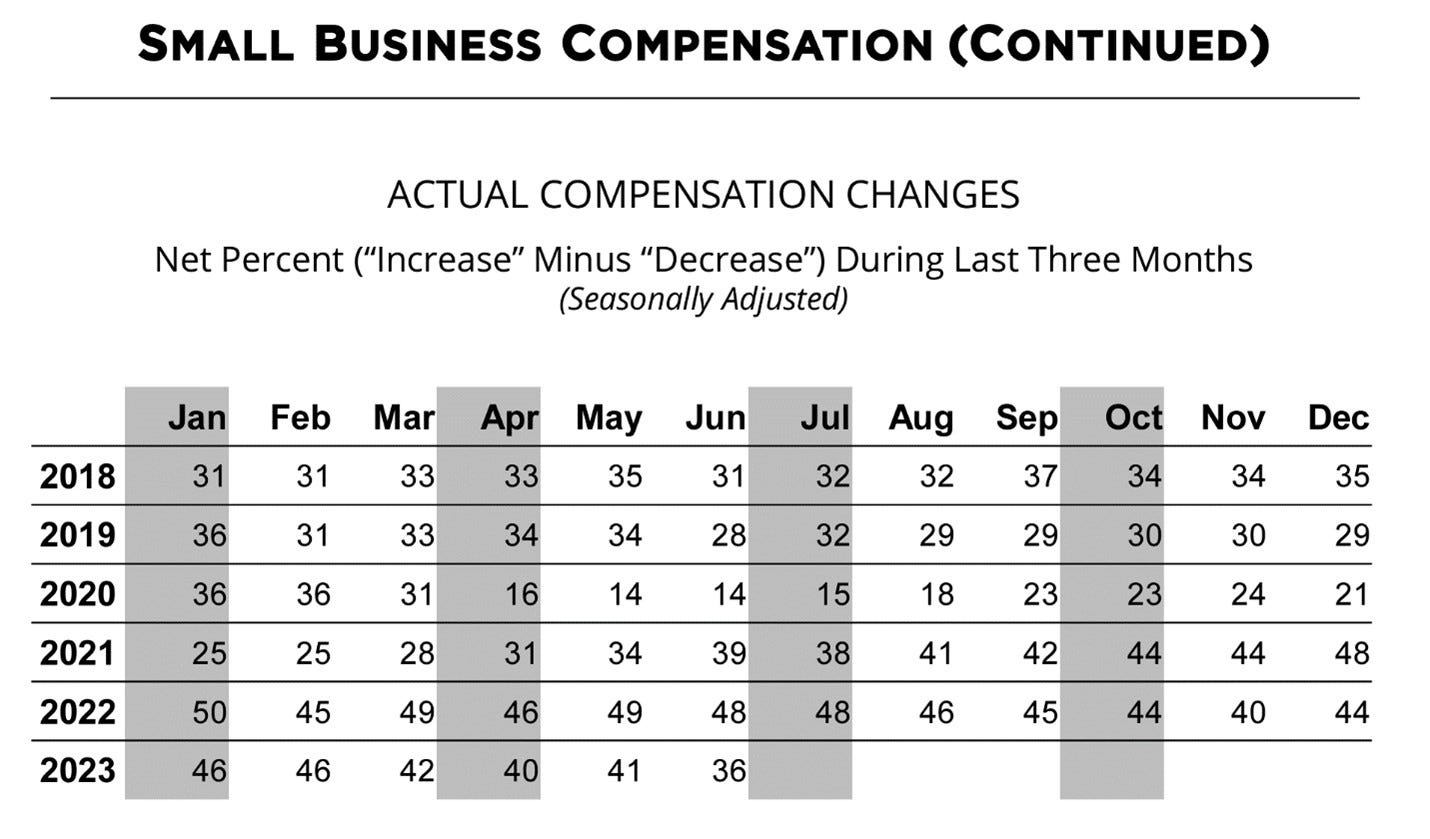Sadly, Size Matters in Business, Too
Some Thoughts on Small Business Sadness
Small business owners are feeling sad these days, and by “these days,” we mean for the past year and a half; NFIB’s Small Business Optimism Index has been below the half-century average for 18 straight months. Some of this pervasive glumness is justified, but a good portion of it appears to be disconnected from economic performance. What’s to blame?
Inflation and Labor Shortages, Obviously
Inflation (you might have heard about it) has been way too fast the past few years, and as of June, 24% of small business owners cited inflation as their biggest problem. That’s down from a record of 41% last July but still higher than at any point prior to the pandemic (and the data series goes back to 1986).
When input prices rise, businesses can either pass along the cost increases to customers and hope they keep buying the same volume or trim their margins in order to stay competitive. Neither option is ideal, and labor shortages have compounded the pain of inflation.
Not only is it difficult to find workers to fill open positions, but employers are also struggling to keep the employees they have. About one in four NFIB members listed quality of labor as their biggest problem in June.
As we’ve documented, workers are still quitting their jobs at an unprecedented pace, though the quit rate has cooled off a bit over the past year.
Put simply, workers know they can earn more by finding a new job. Over the past year, the median job changer has received a significantly larger pay increase than the median job stayer. This has accelerated turnover while putting upward pressure on wages; average hourly earnings for private production employees are up more than 21% since the start of the pandemic in nominal terms and about 3% in real terms.
This table shows how NFIB members responded to a question about raising compensation. While wage pressures have cooled, the last few years were obviously tough in that regard.
It might seem like these factors—inflation, labor shortages, and rising compensation costs—would affect small and large businesses the same, but that’s not the case.
Keep reading with a 7-day free trial
Subscribe to Sage Economics to keep reading this post and get 7 days of free access to the full post archives.




